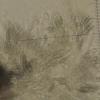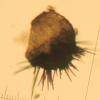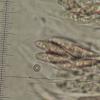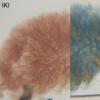
09-01-2026 17:41
Arnold BüschlenHallo, F. dilatata wird von vielen Bryoparasiten

10-01-2026 20:00
Tom SchrierHi all,We found picnidia on Protoparmeliopsis mur

07-01-2026 22:22
 Danny Newman
Danny Newman
Tatraea sp. on indet. hardwood The Swag, Great Sm

10-01-2026 01:18
 Danny Newman
Danny Newman
cf. Neovaginatispora fuckelii on indet. shrub Pre

07-01-2026 10:24
 Danny Newman
Danny Newman
Pezicula sp. on indet. hardwood Appalachian Highl

09-01-2026 10:08
 Blasco Rafael
Blasco Rafael
Hola, en el mismo habitat que la anteriorRetamaDia

08-01-2026 21:22
 Blasco Rafael
Blasco Rafael
Hola, He recogido esta muestra de Orbilia sobre Re

07-01-2026 17:29
 Marc Detollenaere
Marc Detollenaere
Dear Forum,On a barkless Populus I found some smal

10-11-2021 17:33
 Riet van Oosten
Riet van Oosten
Add-on topic http://www.ascofrance.com/forum/7059

07-01-2026 10:05
 Danny Newman
Danny Newman
cf. Chaetospermum on XylariaCosby Campground, Grea
Barr M.E. 1959. Northern Pyrenomycetes, I. Canadian Eastern Arctic.
Contr.Inst. Bot. Univ. Montreal 73: 1-101?
At the moment I am particularly interested in the original description of Capronia fusispora (page 28, fig. 39-41). I have found a (likely) Capronia with regularly with 5 septa. Using the key of Gernot Friebes (2012) the specimen is keyed out as C. fusispora but this species has been described from Phyllodoce coerulae (an arctic heather species). My collection was from Fraxinus (in the temparate zone) being a rather different substrate. However, Friebes notes: "C. fusispora is known from ericaceous plants and possibly also from wood of deciduous trees (a doubtful collection examined by the author)". An alternative would be C. pilosella but this species is said to have 3 septa and not more. The spores seem to be too large for this species: 15-19 x 5-5.5 micron (cf. C. pilosella: 10.6-14.8 x 3.4-4.9, Untereiner 1997). But the match with C. pilosella var. longiseta is much better: 12-19 x 5-6 micron (Nograsek 1990). I am inclined to consider it as C. pilosella with 5 septate spores, being more likely than an arctic species.
I can send you a scan of the protolog tomorrow. Herpotrichiella fusispora is described and illustrated with fusoid ascospores (with pointed ends) which doesn't seem to be the case in your collection. In combination with the ecology that is so different from the original description it seems to be indeed rather unlikely that your find is C. fusispora. I wouldn't take C. pilosella into consideration either since I don't recall ever having seen a description of this species with constantly 5-septate ascospores. The asci of your collection are 8-spored? It seems to me like this is one of the many many Capronia collections for which it is currently impossible to find a fitting name...
Best wishes,
Gernot
Best wishes,
Gernot

the species Gernot shows isn't a Capronia, I have to change this. I think it would better fit Nodulosphaeria due to its paraphyses visible in some of the photos.
Regarding on this, Eduard's collection would indeed have similarities with my collection, but look at the differences in ascus shape and paraphyses/pseudoparaphyses, which seem to be absence. I am sure Eduard's fungus is a Capronia. To check this, can you please look at the reaction in KOH+IKI? This would help us all.
regards,
björn
okay, if it has pseudoparaphyses it should not be a Capronia of course. I just noted that among the photos you sent me back then those pseudoparaphyses weren't noticable whereas you can see them on some of the photos of your website - I should have looked at those photos more thoroughly before posting.
And I agree that Eduard's collection does look like a true Capronia.
Best wishes,
Gernot
Thank you very much for your comments: at least it is clear that my collection is neither C. pilosella nor C. fusispora. As requested by Björn, I have made some further study:
1. The number of spores/ ascus is 8 (asci are up to 65 micron, and about 10 wide).
2. At the second attempt with KOH and than IKI I noted a red colouring between the spores within asci: see photo. I assume this is the hemiamyloid reaction described by Baral in his provisional key (Feb 1997).
The setae can be rather long (up to 90 micron), like those in C. pilosella var. longiseta. The fruit bodies grow close to Polydesmia pruinosa and Eutypella leprosa (so the wood is probably "stromatisiert"), and are slightly immersed. However I found them (on the same piece of wood) also largely immersed (two third) on "clean" (whitish) wood.
Best regards, Eduard
if your Capronia reacted positively to KOH + IKI you should be able to see a more or less distinctive bluish reaction of the hymenium. Your last microphoto looks surprisingly neutral in colour if it was stained with IKI. I attach photos which show a pretty strong reaction to IKI, with and without pretreatment with KOH. Sometimes the reaction is only faint though, as can be seen e.g. in this thread about Capronia pleiospora: http://www.ascofrance.fr/search_forum/17924. Sometimes it may even be absent.
Best wishes,
Gernot



